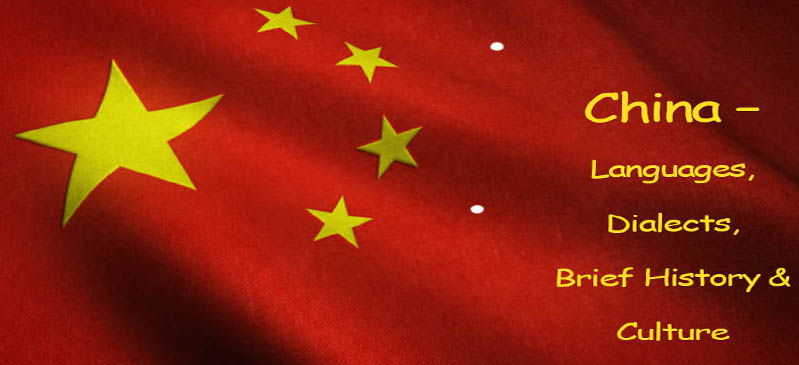In terms of the native speakers, no other language beats Chinese Mandarin. It is globally spoken by more than 1.4 billion people. For that reason, the Chinese Mandarin English Translation services are in constant high demand. And the reason for that is a pretty obvious no-brainer- China is the second-largest economic powerhouse and English is the recognized language of international commerce.
One interesting fact about the Chinese language is that it can be spoken in various forms and dialects. The predominant forms in use are the Standard Cantonese and the Standard Mandarin, with the latter being the official language in Taiwan and mainland China.
The united nations also regard it as an official idiom, but that should not be a surprise because China is a powerful permanent member of the organization. During important united Nations council seating, the contribution of China is always crucial in determining the resolutions made. That is why the Chinese Cantonese English Interpreter enabled communication is vital for enhancing global trade ties and diplomacy within international circles.
Historical Origins of the Chinese Language
The origins of the Chinese language can be traced to the family of Sino-Tibetan languages. Although some scholars classify different dialects as separate languages, they are in fact just variants with the same linguistic roots.
Historically, the evolvement of the Chinese language can be classified into different periods as follows:
The Proto-Chinese: This form which is sometimes referred to as Proto-Sinitic was in use until around 500 BC. This period was characterized by vibrant poetry and ancient inscriptions. Many of the words forming contemporary Chinese are borrowed from this era.
Old or Archaic Chinese: The evolution of Chinese during the 8th to the 3rd century BC passed through a spoken variety of the language known as archaic Chinese. It was spoken mostly during the initial and middle stages of the Zhou Dynasty, and most of its texts can be found in the Shijing poetry, the Shujing history, and bronze artifacts.
The Middle Chinese: was mainly used between the 7th and the 10th centuries during the dynasties of the Sui, Tang, and Song. Foreign translations, variations of modern dialects, and rhyming dictionaries present the best sources for evidence on pronunciations during that time.
Modern Chinese: Contemporary Chinese is largely Mandarin and Cantonese. With more than 6 thousand years of history, this is the oldest written language in the world.
A lot of the Chinese characters have phonetical and pronunciation elements with roots in the old Chinese. Its inflections formed by rough breathing and rich aspiration created a beautiful sound system where the consonants were differentiated.
Many scholars have documented the different stages in the evolution of this complex language, and so the best resource that can comprehensively present all relevant facts is to Learn Chinese online
How Many Languages are Spoken in China?
All major international languages like English, French, Spanish, Dutch, etc. are spoken to some degree in many parts of China. But in terms of indigenous dialects, there are over 300 local languages. And as part of the United Nation’s effort to promote all its six official languages, April 20th is designated in its calendar as the Chinese Language Day. This is one way of trying to celebrate the rich linguistic and cultural diversity of our planet.
The Chinese Culture and Its Influences
It would not be a blanket assumption to say that the culture of the Chinese is spread throughout the world. There is no country or city without a substantial Chinese population. Chinese restaurants are common almost everywhere, and therefore their cultural influences can be seen in terms of their food, language, and mannerisms.
Sometimes, Chinese culture is regarded as mysterious and unique due to some social practices. For instance, the mere act of taking tea and how this is done can show the social status of a person. But basically, the Chinese culture is deeply rooted in Confucianism. Traditional festivals are highlights of cultural activities. Some three interesting aspects of culture in China include:
Dating and Relationships: When you date someone in China, the open assumption is that the relationship is exclusive.
The Family Unit: is treated like a sacred undertaking and all Chinese cherish their family origins.
Horoscope: and the Zodiac sign are highly regarded in China. Following them is like a religious undertaking.
Food: Ethnic diversity and geographical differences determine the type of cuisine from place to place. However, rice plays a central role in the historical development of China. Generally, many dishes rely on peanut and stir-fry dishes.
Lest we forget, the love for wet markets and bush or wild meat is a special treat for most Chinese. Eating and culture go almost hand in hand.
Religious Tolerance and Cultural Diversity
Until recently, religious tolerance was not a common practice in China. And just as varied as its dialects are, the religious practices are influenced by regional differences. The common forms of worship center around Confucianism, Buddhism, and Taoism. Christianity and Islam are also reasonably practiced in many parts of China, but this is mainly due to the influences of immigrants.
To sum up, it is safer to say that contemporary China is a hub of cultural, linguistic, and economic activities that span the entire globe.

